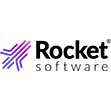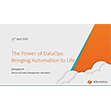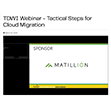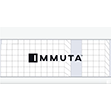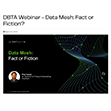

(amiak/Shutterstock)
In addition to the explosion of data volumes, many organizations are struggling with an explosion in the number of data sources and data silos. Managing data in this fluid, ever-changing environment is a major challenge for would-be data-driven organizations, but one pattern that offers potential salvation for the stressed data architect is the data fabric.
Data fabrics aren’t new. We’ve been writing about them for several years here at Datanami. In the early days, the definition of a data fabric was a bit loose. But lately, it’s begun to harden and the core elements of a data fabric have coalesced into a configuration that’s finding traction in the real world.
Forrester analyst Noel Yuhanna was one of the early proponents of the data fabric. In the latest Forrester Wave: Enterprise Data Fabric, Q2 2022, Yuhanna dived into the benefits of the data fabric and dissected the offerings of 15 data fabric vendors.
“Today, delayed insights can have a devastating effect on a firm’s ability to win, serve, and retain customers,” Yuhanna wrote in the Wave report. “Organizations want real-time, consistent, connected, and trusted data to support their critical business operations and insights. However, new data sources, slow data movement between platforms, rigid data transformation workflows and governance rules, expanding data volume, and distributed data across clouds and on-premises, can cause organizations to fail when executing their data strategy.”
Centralizing all data in a data lake such as Hadoop or Amazon S3 was supposed to solve many of these problems, but it hasn’t worked out that way. Not every piece of data belongs in lakes, thanks to bandwidth and storage costs as well as sheer practicality. Technological progress also continues to churn out new digital innovations, and people are more than happy to try them out, which typically results in yet another data silo.
Data silos appear to be permanent houseguests. Just as Edwin Hubble’s raisin pudding analogy held that the expansion of the universe makes matter grow farther apart, the big data boom seems to be causing data repositories to drift further apart even as the overall volume of data continues expanding at a geometric rate. The data fabric is a way to layer some connective tissue among those sweet, sweet nuggets of data.
As Yuhanna wrote:
“Data fabric delivers a unified, integrated, and intelligent end-to-end data platform to support new and emerging use cases,” he continued. “It automates all data management functions–including ingestion, transformation, orchestration, governance, security, preparation, quality, and curation–enabling insights and analytics to accelerate use cases quickly.”
Data fabrics are essentially pre-integrated super-suites of data management tools. Instead of cobbling together separate products for handling the data functions that Yuhanna mentioned above (not to mention data catalogs), data fabrics deliver these functions through a single product, providing consistency and repeatability to big data management processes, which helps breeds trust in data and the analytics that come from it.
Yuhanna sees a lot of data fabrics being deployed in cloud and hybrid cloud environments at the moment, particularly in support of applications like customer 360, business 360, fraud detection, IoT analytics, and real-time insights. Data fabrics are being deployed across multiple industries, including financial services, retail, healthcare, manufacturing, oil and gas, and energy, he wrote.
Data fabrics are also being deployed in the life sciences industry, where they can help knit disparate data silos into a seamless whole. One life sciences company that’s betting big on data fabrics is eClinical Solutions, a Massachusetts-based provider of software for running clinical trials.
In the past, clinical trials might have involved three or four disparate data sources, according to Raj Indupuri, eClinical Solutions’ CEO.
“But now with research we end up for every trial, every trial might have 15+ different sources, whichi means different streams of data, different structures, different formats, and different systems,” Indupuri said. “So the problem in terms of data chaos–we refer to this as data chaos–has only exploded or increased.”
In Indupuri’s view, the data fabric is a natural evolution of the data lake, or the lakehouse. These flexible data repositories are able to ingest and store just about any type of data, giving customers or stakeholders the ability to transform, prepare, and analyze the data when they need to. But when data spans multiple data lakes (or warehouses or lakehouses), that is where data fabrics play an important role.
“One big difference would be, instead of having everything in one centralized location, with the data fabric, that is how do you actually combine different stores,” he told Datanami in a recent interview. “They could be distributed. But on top we have a fabric so that with governance and with other capabilities, we’re able to deliver analytics to end stakeholders efficiently, to deliver it to downstream to different stakeholders in different systems.”
eClinical Solutions has already build some components of a data fabric solution into its offering. It has built an end-to-end data pipeline in AWS that automatically extracts metadata and catalogs it when a new piece of data lands in the system, according to Indupuri. The company’s solution also includes a data management workbench where data managers can review and clean data.
“We evolved significantly over a decade or so,” he said. “When we first started, it was kind of a report. Then we evolved into a data lake type of architecture, where you can stage any data, regardless of the source. Then we have embedded capabilities where it’s metadata driven, and you can actually transform and publish data marts within our data cloud.”
Where it gets tricky is dealing with the data repositories of eClinical Solutions’ own customers, who are drug companies or companies doing drug exploration. These customers often have separate data lakes for clinical research, for operational data, for safety data, and for regulatory data, and are loathe to move or copy data between them.
“You can actually enable them to access data across these data stores, or these distributed data clouds or data lakes or data warehouses,” Indupuri said. “So that’s where data fabric can help.”
Related Items:
Data Mesh Vs. Data Fabric: Understanding the Differences
Data Fabrics Emerge to Soothe Cloud Data Management Nightmares
Big Data Fabrics Emerge to Ease Hadoop Pain
September 16, 2025
- MongoDB Launches AI-Powered Application Modernization Platform to Reduce Technical Debt and Speed Innovation
- UC San Diego Plays Key Role in National Effort to Build a Fusion Research Data Platform
- NVIDIA Welcomes Data Guardians Network to Its Elite Startup Program
- Acceldata Survey Finds Persistent Gaps in Enterprise AI Data Readiness
- Exabeam and DataBahn Partner to Accelerate AI-Powered Security Operations with Smarter Threat Detection
- Domino Data Lab Achieves ISO 9001 and SOC 2 Type II With Zero Findings
- Qlik Open Lakehouse Now Generally Available, Giving Enterprises Rapid, AI-Ready Data on Apache Iceberg
- Expert.ai and Springer Nature Partner to Transform Clinical Trials with AI-Driven Intelligence and Deep Domain Expertise
- Denodo Expands AI Capabilities with Release of DeepQuery in Platform 9.3
- Indicium Receives Investment from Databricks Ventures
- DataOps.live Launches Major Upgrade to Deliver AI-Ready Data at Enterprise Scale
- Ethernet Alliance to Showcase Multivendor Live Demonstration at ECOC 2025
- Allot Leverages SnapLogic to Launch AI Agent to Highlight Health Inequalities in Pharma
September 15, 2025
- Penn State Center for Social Data Analytics Now Accepting Grant Applications
- Pacific Wave, Cal Poly Humboldt, and Internet2 Collaborate on Connectivity to Singapore, Guam, and Jakarta
- Governing AI Starts with Giving Users Control Over Their Data
- KX and OneTick Merge to Unite Capital Markets Data, Analytics, AI and Surveillance on One Platform
- Snowflake Ranked by Fortune as #1 on Its Future 50 2025 List
- Exabeam and Cribl Partner to Power Scalable, High-Fidelity Threat Detection with Next-Gen Data Pipelines
September 11, 2025
- Inside Sibyl, Google’s Massively Parallel Machine Learning Platform
- What Are Reasoning Models and Why You Should Care
- Beyond Words: Battle for Semantic Layer Supremacy Heats Up
- Rethinking Risk: The Role of Selective Retrieval in Data Lake Strategies
- Software-Defined Storage: Your Hidden Superpower for AI, Data Modernization Success
- The AI Beatings Will Continue Until Data Improves
- What Is MosaicML, and Why Is Databricks Buying It For $1.3B?
- Why Metadata Is the New Interface Between IT and AI
- Top-Down or Bottom-Up Data Model Design: Which is Best?
- How to Make Data Work for What’s Next
- More Features…
- Mathematica Helps Crack Zodiac Killer’s Code
- GigaOm Rates the Object Stores
- Solidigm Celebrates World’s Largest SSD with ‘122 Day’
- Promethium Wants to Make Self Service Data Work at AI Scale
- Databricks Now Worth $100B. Will It Reach $1T?
- AI Hype Cycle: Gartner Charts the Rise of Agents, ModelOps, Synthetic Data, and AI Engineering
- MIT Report Flags 95% GenAI Failure Rate, But Critics Say It Oversimplifies
- The Top Five Data Labeling Firms According to Everest Group
- Data Prep Still Dominates Data Scientists’ Time, Survey Finds
- Career Notes for August 2025
- More News In Brief…
- Seagate Unveils IronWolf Pro 24TB Hard Drive for SMBs and Enterprises
- Gartner Predicts 40% of Generative AI Solutions Will Be Multimodal By 2027
- DataSnap Expands with AI-Enabled Embedded Analytics to Accelerate Growth for Modern Businesses
- Acceldata Announces General Availability of Agentic Data Management
- Transcend Expands ‘Do Not Train’ and Deep Deletion to Power Responsible AI at Scale for B2B AI Companies
- Pecan AI Brings Explainable AI Forecasting Directly to Business Teams
- SETI Institute Awards Davie Postdoctoral Fellowship for AI/ML-Driven Exoplanet Discovery
- NVIDIA: Industry Leaders Transform Enterprise Data Centers for the AI Era with RTX PRO Servers
- Hitachi Vantara Recognized by GigaOm, Adds S3 Table Functionality to Virtual Storage Platform One Object
- Ataccama Data Trust Assessment Reveals Data Quality Gaps Blocking AI and Compliance
- More This Just In…

















